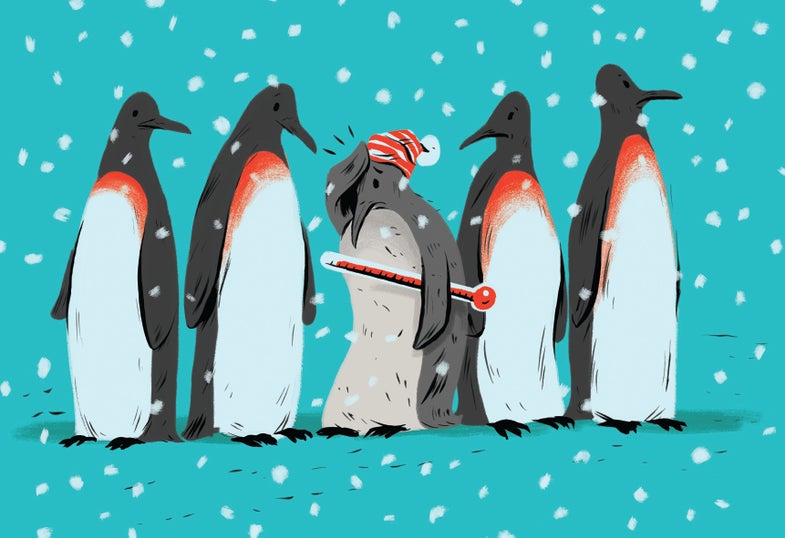Can Being Cold Really Make You Sick?
Short answer: Yes

We’ve all been told to bundle up or we’ll catch cold. But science says the common cold is caused by the rhinovirus, not the weather. Actually, according to researchers at Yale University, there just might be something to this old wives’ tale.
For decades, researchers have known that the rhinovirus replicates more readily in cooler environments, such as the nasal cavity, rather than at the cozier core body temperature. The reason for this, explains Ellen Foxman, an assistant professor at Yale University School of Medicine, long remained a mystery. Scientists didn’t know whether the virus itself worked better at colder temperatures, or the immune system worked worse. “No one could find anything,” she says.
Then Foxman and her colleagues studied what’s called the innate immune system, which is present in every cell, and how it responds to various temperatures when the rhinovirus is present. In the lab, they examined airway cells from mice and found that the immune system produced fewer proteins called interferons at lower temperatures, allowing the cold virus to flourish.
In a study published this year, they found corroborating results in human cells: At the warmer core body temperature, innate immune pathways that block viral growth are more active, and an enzyme that degrades the viral genome works better. Now the team is trying to better understand the defenses the body uses to suppress rhinovirus.
While wrapping a scarf around your nose to warm it up might help ward off a cold, Foxman recommends washing your hands so you don’t transmit the germs to your eyes, nose, or mouth in the first place. “If the virus isn’t in your nose, it can’t cause infection,” she says.
This article was originally published in the November/December 2016 issue of Popular Science.
Have a burning question? Email it to askanything@popsci.com or tweet it to @PopSci #AskAnything